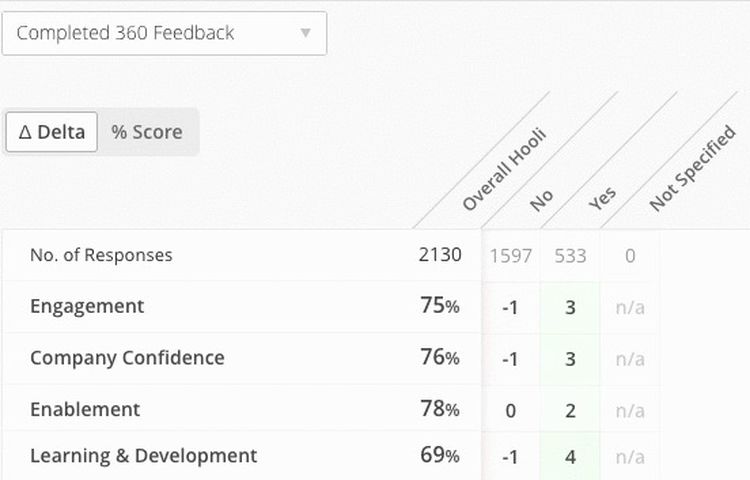
Article

Written by

Director of People Science Research, Culture Amp
Many of you are likely familiar with the engagement survey drill, which goes like this:
Once you feel like you’ve made progress, do it all over again. We’ve found this process to be effective in designing a purposeful culture.
However, sometimes the feedback process can feel removed from your larger business objectives and even your other people's processes. Here are a few examples of how you can incorporate employee feedback, particularly engagement survey results, into other processes to make them even more efficient and effective.
Incorporating employee feedback data into other processes is a great way to showcase the utility of feedback to new stakeholders. It helps elevate the reputation and perceived usefulness of your feedback program. It also improves visibility for those not interacting with employee feedback data in their day-to-day work. They might not even know that they have access to this data or how it relates.
Instead of launching another survey, and fearing the dreaded survey fatigue (though we haven’t found fatigue to be an issue if you are taking action), you can find new ways to make the survey data you already have do more for you.
We’ve found being responsive to what your organization needs is the best way to set your survey cadence, so we wouldn’t recommend rigidly setting your survey to an annual timeframe. However, sometimes gathering employee feedback aligns with your annual planning.
When this happens, use employee perceptions of alignment, enablement, and company confidence as inputs to that plan. Below, we’ll look at examples of using employee feedback data in your annual planning process. Where benchmark scores are provided, they are the average percentage that responds "Agree" or "Strongly Agree" on a 5-point scale to this question on a Culture Amp Survey.
One way to use feedback at micro-levels of the organization is by utilizing results to plan the agenda (and exercises) for team offsites. While the annual planning examples apply to teams as well, some concepts might be even more relevant to teams.
As a People Operations function, you likely have multiple programs running concurrently. While employee feedback data shouldn’t replace how you currently assess these programs' effectiveness, it can be a quick way to see if a program has the expected effect.
This can be accomplished by creating program participation (see 360 feedback example below) or program rating (see manager effectiveness example below) as a demographic or filter so that the results can be sliced and diced accordingly.

Hiring is one of the most important processes the people function (and all employees) are tasked with. Employee feedback can be used at multiple steps in the process, but it's a good idea to start with recruiting.
During the selection process, employee feedback data can be used to give candidates a realistic job preview. For example, have employees said it’s challenging to maintain a healthy work/life blend at your organization? Or are tried and true methods favored over innovating? Candidates should know these things to help them decide if your organization is the place for them to thrive.
You can use an onboarding survey optimized to receive feedback on your onboarding program. We’ve written about how at Culture Amp we’ve taken a phased approach to onboarding and feedback. Outside of a specific onboarding survey, you can use employee feedback from engagement surveys on factors like Enablement to identify where the onboarding program may need to be improved for particular roles.
What feedback data you have access to and what programs you have in place will affect which of the above ideas you can implement. Hopefully, our ideas can spur your own on how to embed employee feedback into other people (and overall business) initiatives.
Using your data to guide other processes will breathe new life into it. Remember, if you use employee feedback in new ways, let people know! Making the connection between how employee feedback is used helps employees feel like their voices have been heard and can ensure that the feedback continues.